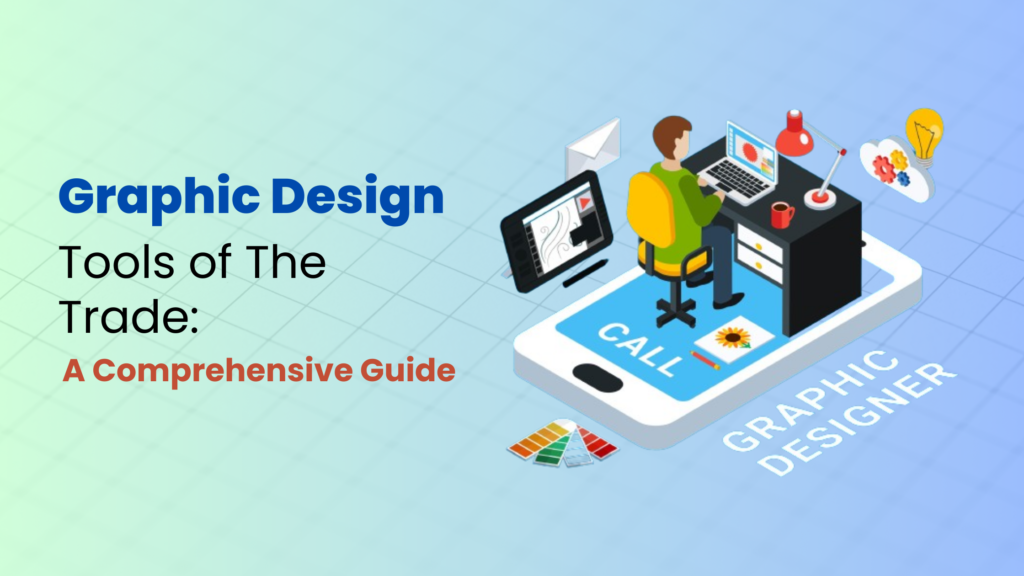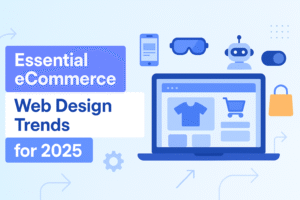Introduction of Graphic Design Tools:
In the dynamic world of graphic design, having the right tools at your disposal can make all the difference between an average project and an outstanding masterpiece. Whether you’re a seasoned professional or just starting your journey in the field of design, understanding the vast array of tools available is essential for unleashing your creativity and achieving your design goals.
In this guide, we’ll take you on a journey through the essential tools and software used by graphic designers worldwide. From industry-standard software to cutting-edge digital drawing tablets, typography resources, and collaboration platforms, we’ll cover everything you need to know to equip yourself for success in the ever-evolving landscape of graphic design.
A Comprehensive Guide to Graphic Design Tools of The Trade:
Certainly! Here’s a more detailed breakdown of what you might include in a comprehensive guide to graphic design tools of the trade:
1. Introduction to Graphic Design Tools:
- Define what graphic design tools are and their importance in the design process.
- Discuss the evolution of graphic design tools from traditional to digital mediums.
2. Essential Software for Graphic Design:
- Explore the most popular graphic design software, such as Adobe Creative Cloud (including Photoshop, Illustrator, and InDesign), Affinity Designer, Sketch, and CorelDRAW.
- Provide an overview of each software’s features, strengths, and typical use cases.
- Discuss the pros and cons of each software and considerations for choosing the right tool for specific design projects.
3. Digital Drawing and Illustration Tools:
- Highlight digital drawing and illustration software like Adobe Illustrator, Procreate, Clip Studio Paint, and Autodesk Sketchbook.
- Discuss their capabilities for creating vector graphics, illustrations, and digital artwork.
- Provide tips and techniques for using these tools effectively, including brush customization, layer management, and drawing techniques.
4. Image Editing and Manipulation Tools:
- Cover image editing and manipulation software such as Adobe Photoshop, GIMP, and Affinity Photo.
- Explore their features for retouching photos, creating digital compositions, and applying effects and filters.
- Provide tutorials and examples showcasing common image editing tasks, such as color correction, photo retouching, and compositing.
5. Page Layout and Publishing Tools:
- Discuss page layout and publishing software like Adobe InDesign, QuarkXPress, and Affinity Publisher.
- Explore their capabilities for designing layouts for print and digital publications, including magazines, brochures, eBooks, and presentations.
- Provide tips for organizing content, working with grids and guides, and preparing designs for print or digital distribution.
6. Web Design and Prototyping Tools:
- Cover web design and prototyping software such as Adobe XD, Sketch, Figma, and InVision Studio.
- Discuss their features for creating website layouts, designing user interfaces, and prototyping interactive experiences.
- Guide wireframing, prototyping workflows, and collaborating with developers and stakeholders.
7. Typography Tools and Resources:
- Explore typography tools and resources for selecting and managing fonts, such as Adobe Fonts, Google Fonts, and Font Squirrel.
- Discuss typographic principles, including type classification, hierarchy, and pairing.
- Provide recommendations for typography books, websites, and resources for further learning.
8. Asset Management and Collaboration Tools:
- Cover asset management and collaboration tools like Adobe Creative Cloud Libraries, Dropbox Paper, and Slack.
- Discuss their role in organizing design assets, sharing files with team members, and facilitating collaboration and feedback.
- Provide tips for setting up efficient workflows, version control, and communication channels for design teams.
9. Mobile Apps and Tools for Designers:
- Highlight mobile apps and tools that complement desktop software for on-the-go design tasks, such as Adobe Capture, Canva, and Over.
- Discuss their features for creating graphics, editing photos, and generating design ideas using mobile devices.
- Provide recommendations for mobile-friendly design workflows and integration with desktop software.
10. Future Trends and Emerging Tools:
- Explore emerging trends in graphic design tools, such as artificial intelligence, augmented reality, and immersive design experiences.
- Discuss how these technologies are shaping the future of graphic design and expanding the possibilities for designers.
- Provide insights into upcoming tools and technologies that may revolutionize the industry in the years to come.
By covering these topics comprehensively, your guide to graphic design tools of the trade will serve as a valuable resource for both novice and experienced designers, equipping them with the knowledge and skills to navigate the vast landscape of design software and tools effectively.
Conclusion:
In the fast-paced and ever-evolving world of graphic design, having a solid understanding of the tools of the trade is essential for success. Throughout this comprehensive guide, we’ve explored a wide range of tools and software that empower designers to bring their creative visions to life, whether they’re working on print materials, digital designs, web interfaces, or motion graphics.
Graphic design is a dynamic and constantly evolving field, and staying up-to-date with the latest trends, tools, and techniques is key to staying ahead of the curve. Keep learning, keep experimenting, and keep pushing yourself to create designs that inspire, captivate, and leave a lasting impact on your audience.











